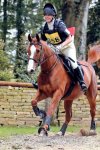Taliesan
Well-Known Member
Eh? Lip seal? Horses breath through their nostrils - and any of the scawbridge /wraparound type bitless bridles will directly impact on the nose, unlike the bit which has nothing to do with a horses airway.
You are correct - horses do breathe through their noses. As I said in my earlier post, they are obligate nasal breathers and cannot breathe through their mouths. The reason I mentioned the lip seal is that research has shown that a horse will swallow right before starting to run. This creates a vacuum seal in their mouths and the resultant negative pressure in the oropharynx holds their soft palate in place. This means that the horse's breathing system is free to operate at maximum efficiency. The lips forming an air-tight seal is an important part of this process.
The bit can create holes in the horse's lip seal (these can be tiny, the horse's mouth doesn't have to be wide open) which allows air into their mouth and this dissipates the negative pressure the horse had created by swallowing. Without this vacuum seal the soft palate will move around in the back of their throat and, with each intake of breath, their airway will be obstructed.
Here are three articles talking about three different pieces of research on the matter. The first one also has an excellent diagram illustrating this process.
https://horsesandpeople.com.au/clearing-the-air-on-the-bit-free-debate/
https://www.siliconrepublic.com/innovation/sandra-hurley-ul-famelab-equine-health-bit
https://thehorse.com/136474/bits-and-breathing-whats-the-relationship/
No bitless bridle should have any impact on a horse's ability to breathe when correctly fitted. The noseband of a bitless bridle should sit on the skull of the hose above the nasal bones and thus have no pressure on the nostrils - it is no different to where a correctly fitted cavesson noseband should sit.
In my opinion things like drop and flash nosebands will have far more of a detrimental impact on the horse's ability to breathe as their design closes right around and across the nostrils of the horse.


